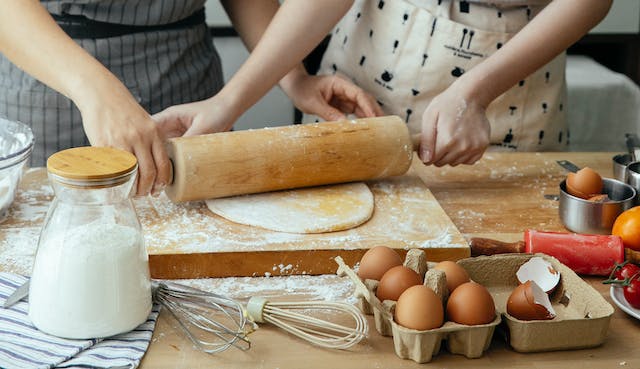There are two main ways to test yeast: one for fresh yeast and another for yeast granules. These methods help figure out if the yeast is good to use. Let’s explore how you can test yeast to make sure it’s ready to go.
For fresh yeast, you’ll need some warm water and a bit of sugar. First, dissolve the yeast in the warm water. Then add a pinch of sugar. If the mixture starts to bubble and foam after about 5-10 minutes, your yeast is active and good to use.
Yeast granules, on the other hand, need a different test. You’ll use warm water again but with a little sugar and the yeast granules. Mix them together and let it sit for about 5-10 minutes. If you see bubbles forming or the mixture becoming frothy, your yeast is active and ready to help your dough rise.
Remember, using good yeast is important for baking fluffy bread and tasty treats. Testing it before you start baking ensures your dough will rise just the way you want it to!

What You Need To Know About Yeast
Yeast is a tiny living thing that’s just a single cell. It does something really cool: it changes sugar and starch into carbon dioxide. This might not sound exciting, but it’s what makes bread fluffy and soft!
Imagine yeast as a superhero in baking. When you mix it with dough, it starts to ferment. Fermentation is like a magical process where the yeast produces bubbles of carbon dioxide. These bubbles puff up the dough, making it rise and turn into delicious bread.
There isn’t just one type of yeast—there are lots! And each type works at its own pace. Some yeast are super speedy, while others take their time to make the dough rise.
If you want your yeast to last longer, keep it in the fridge or a cool, dark place, like a pantry. Heat weakens its superpower and makes it go bad faster.
Here’s a fun fact: yeast is not the same as baking powder or baking soda. Those two are like helpers in the kitchen that make things rise quickly using chemical reactions. But yeast? It’s a living thing doing its own cool biology stuff to make your bread perfect!
Why Testing Yeast Matters
Testing yeast before using it is important even if it hasn’t reached its expiration date. Yeast packages have expiration dates, but they might not always indicate if the yeast is still good to use or if it’s gone inactive (dead). Sometimes, even expired yeast can still work, while unexpired yeast might fail to do so.
Yeast has a variable shelf life. If it’s dead, it can’t turn sugars into carbon dioxide, which is essential for making bread rise. Live yeast creates a distinctive foam while it’s active. Bread made with dead yeast turns out dense, underproofed, and short because it lacks the gas needed to lift the dough.
To check if yeast is still alive and usable, you can do a simple test. Mixing it with warm water and sugar will make it foam if it’s alive. This way, even if the expiration date has passed, you’ll know if the yeast is active enough to leaven bread properly.
By testing yeast before use, regardless of its expiration date, you ensure the success of your baking endeavours and avoid disappointingly flat loaves of bread.
Understanding Different Types of Yeast and How to Test Their Freshness
Yeast plays a crucial role in making bread, but not all yeast is the same. There are three main types: active dry yeast, fresh yeast, and instant yeast. Each type requires specific proofing methods to ensure it’s still good to use.
- Active Dry Yeast: Found in granules, it comes in jars or packets. To check if it’s active, mix it with warm water, and sugar, and let it sit for about ten minutes. If the mixture becomes foamy, the yeast is active; if not, it’s no longer useful.
- Fresh Yeast: Available in cakes or blocks, fresh yeast emits a bread-like aroma when it’s fresh. To test its freshness, combine it with warm water and sugar, then wait for foaming and a distinct bready smell within ten minutes. If absent, the yeast is spoiled.
- Instant Yeast: Also called bread machine yeast or rapid-rise yeast, this type comes in jars or packets. Similar to active dry yeast, it should start foaming within minutes if it’s fresh and active.
Understanding these differences and testing methods ensures that the yeast used in your baking is active and will help your bread rise perfectly.

Leave a Reply